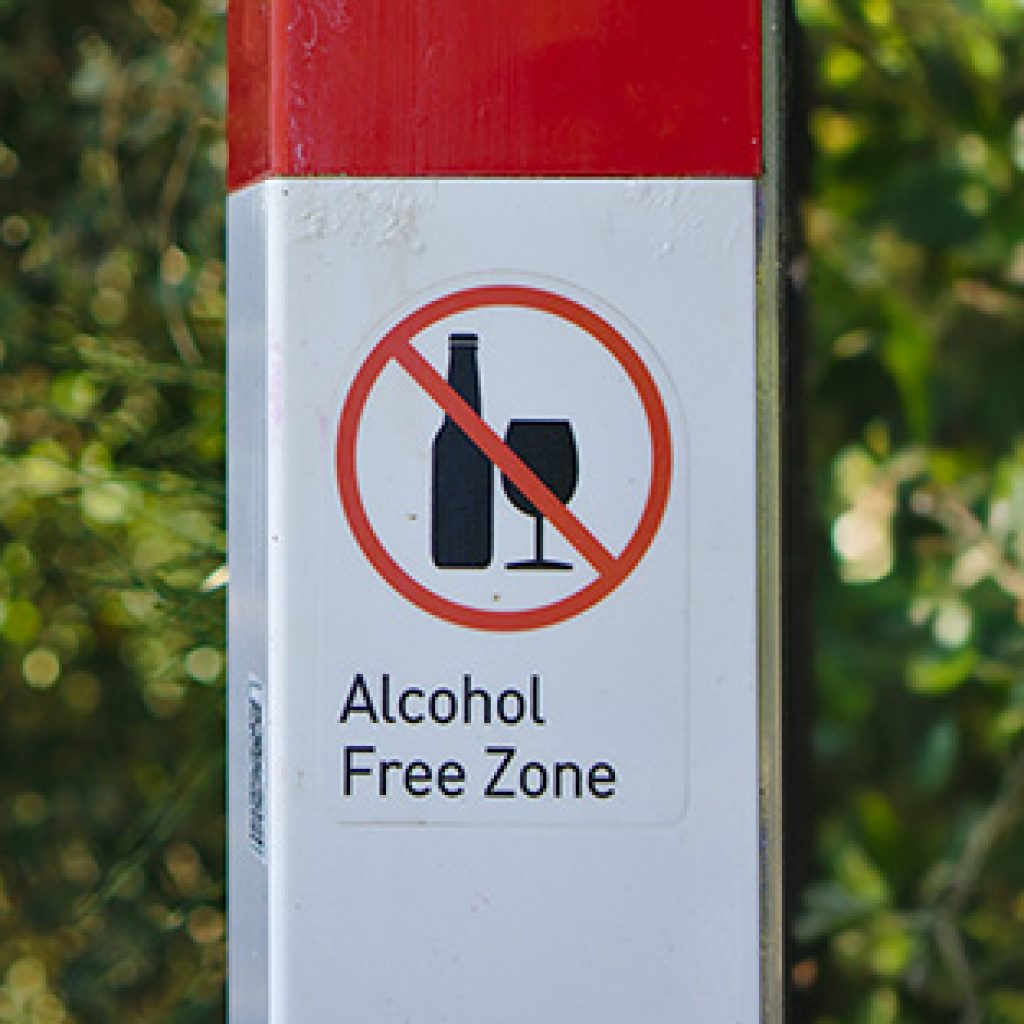Breaking Down Barriers to Treatment:
Breaking Down Barriers to Treatment: Reaching Parity for Rural Clients with Co-occurring Substance Use Disorders and Serious Mental Illness
“Substance use disorders (SUDs) occur when the recurrent use of alcohol and/or drugs causes clinically significant impairment, including health problems, disability, and failure to meet major responsibilities at work, school, or home” (Substance Abuse and Mental Health Services Administration [SAMHSA], 2019). SUDs have been well-documented to occur at higher rates in rural settings, with the upward trend in the rurals beginning in 2006 according to the Centers for Disease Control and Prevention (CDC). The consequences of increased use rates include higher rates of overdoses and deaths in rural areas, not to mention contributing to higher rates of suicide and higher rates of death overall for cancer, heart disease, unintentional injury, CLRD (Chronic Lower Respiratory Disease) and stroke for those living in rural areas (CDC Rural Health Website, 2020). With only 7.4% of those with COD obtaining treatment for both disorders, and 55% receiving no treatment whatsoever, identifying and addressing barriers to treatment is crucial for underserved populations, particularly in rural settings (Substance Abuse and Mental Health Services Administration [SAMHSA], 2015).
“Serious mental illness is defined by someone over 18 having (within the past year) a diagnosable mental, behavior, or emotional disorder that causes serious functional impairment that substantially interferes with or limits one or more major life activities” (Substance Abuse and Mental Health Services Administration [SAMHSA], 2019). The documentation of SMI in rural settings has been less clear. While SMI occurs at similar rates in both urban and rural settings, the disparities between rural and urban settings in the availability and accessibility of treatment are stunning. According to Dennis Mohatt, Co-director of the Mountain Plains Mental Health Technology Transfer Center (MHTTC), “The cold hard facts about mental health and rural America is that more than 60% of rural Americans live in mental health professional shortage areas, that more than 90% of all psychologists and psychiatrists and 80% of Masters of Social Work, work exclusively in metropolitan areas. More than 65% of rural Americans get their mental health care from primary healthcare provider, and the mental health crisis responder for most rural Americans is a law enforcement officer.” During the MHTTC webinar of May 30, 2018, Mental Health and Rural America: Challenges and Opportunities, some of the issues that impact treatment for mental health disorders include insurance policies that have weaker coverage, fewer choices for treatment, less identification of SMI, and lower rates of health literacy, – the capacity to obtain, process, and understand basic health information and services needed to make appropriate health decisions- in rural areas.
Prevalence of Co-occurring Disorders
If a person has both a SMI and at least one SUD they meet the criteria for COD. COD are experienced by an estimated 8.9 million adults in the United States disorders (Substance Abuse and Mental Health Services Administration [SAMHSA], 2015). COD are found in about half of people having SUDs or SMI (Ross & Peselow, 2012; Kelly & Daley, 2013). The reasons for developing COD may be due to genetic makeup, additional risk factors for SUD for those with SMI, stress, environmental influences, trauma or adverse childhood experiences, or SUDs may initiate brain changes that precede SMI (Santucci, 2012). Further complicating a diagnosis of COD is the fact that both SUDs and mental disorders are associated with changes in areas of the brain that may lead to development of a comorbid illness (Ross & Peselow, 2012; Fontenelle, et al., 2011). Some common Comorbid SUDs are listed in a Table provided By the National Institute on Drug Abuse.
Barriers to COD Treatment
In an integrative literature review of treatment access barriers and disparities, researchers found that most barriers to the treatment of COD fall into two general categories: personal characteristics barriers and structural barriers (Priester, et al., 2015). Note should be taken that one important limitation of the literature review is the absence of studies inclusive of LGBTQ, older adults, and those identified as Hispanic/Latino.
Personal characteristics barriers were identified in the review as either:
- Personal vulnerabilities – “individual characteristics, knowledge, and skills that may impede treatment access”. Examples may include co-occurring disorders (COD) such as psychosis, which can be made more sever by concurrent substance use. This can result in unstable mental health, reduced motivation, and less capability to look for and enter treatment (Barrowclough et al., 2006; Green, Drake, Brunette, & Noordsy, 2007; as cited in Priester, et al., 2015). Individuals with schizophrenia and SUDs may have impaired cognition, social skills, and low energy which result in reduced motivation (Bellack & DiClemente, 1999; Little, 2001; as cited in Priester, et al., 2015). Situations such as being in crisis, or personal distress and disorganization may also become barriers to treatment as can intellectual impairments.
- Or personal beliefs – “attitudinal, motivational, and belief-based impediments that formally or informally inhibit an individual’s ability to mobilize personal resources to access care”. Examples of personal belief barriers include cultural beliefs, beliefs about treatment providers, fear or lack of trust of institutions, and stigma associated with SUDs and SMI. Personal beliefs are potentially more impactful as barriers to treatment for marginalized populations such as people of color, people with low socioeconomic status, and adolescents. Personal beliefs that create barriers to treatment are not just those held by clients, but can also be beliefs about stigma or perceived stigma by parents, or even behavioral or healthcare providers.
Structural barriers consisted of:
- Service availability or access – lack of immediate availability of specialized treatment services (providers and/or sites);
- Failure to identify co-occurring SMI and SUDs – especially for certain populations such as adolescents, people with low incomes, and racial and ethnic minorities;
- Lack of adequate provider training in diagnosing and treating co-morbid disorders – also including provider lack of confidence in discussion substance use with clients, lack of capacity to manage those patients, and lack of knowledge of appropriate referral sources. Lack of training and/or regulatory requirements for providing MAT (Priester, et al., 2015).
- Service provision – identified as organizational red tape and ways the service is provided – that resulted in lower treatment enrollment. Ways that this barrier manifested included:
- not making clients feel welcome,
- long wait times for appointments,
- treatment style that was confrontational,
- lack of culturally competent treatment,
- and lack of onsite childcare.
- Racial and ethnic disparities – proved to be another formidable barrier to treatment. In total, nine different sub-populations were found to be absent or underrepresented in the literature:
- adolescents,
- women,
- men of color/ethnic minorities,
- veterans,
- individuals with low socio-economic status,
- individuals with SPMI,
- individuals who are involved in the criminal justice system or are experiencing homelessness,
- and individuals with intellectual disabilities,
- LGBTQ individuals,
- older adults,
- and individuals of Hispanic descent.
- and insurance or policy-related barriers – such as lack of insurance, Medicaid programs that did not cover SUD treatment, or lack of coverage for prevention or early intervention services (Priester, et al., 2015).
Rural locations also often experience higher rates of opioid overdose and opioid-related hospitalizations and a focus on rurals by pharmaceutical companies and drug cartels, further exacerbating the problem (Priester, et al., 2015).
Research-based Methods for Overcoming Barriers to COD Treatment
Treatment for COD should be comprehensive and integrated and few rural SUD or SMI treatment programs are equipped to provide those levels of treatment. There are a number of ways to reduce rural structural barriers to treatment for COD:
- E-Health and Technology-based Interventions (TBIs) – These include a variety of terms which are becoming rapidly familiar, such as telehealth, computer-based interventions and internet-based interventions and include smartphones, tablets, and smart watches and a variety of computer, internet, and mobile applications (Sugarman, et al., 2017). TBIs are not the same as online therapy or e-therapy with a live behavioral health provider using e-mail, video, audio, or text messaging to interact with a client. Even if text or e-mail is used in a TBI, interaction with a live therapist is minimal and email or text responses are automated, and a weekly 10-15 minute check-in with a therapist is the extent of live interaction. TBIs have been used for multiple disorders, including SUDs, depression, anxiety, and PTSD, and research supports them as a viable choice because TBIs are relatively easily accessible and cost effective. The downsides of TBIs are that both parties need access to broadband, privacy risks exist that need to be addressed, reimbursement for telehealth services must be determined ahead of time, and providers may not be able to provide services to clients in different states.
- Use client appropriate and developmentally appropriate treatment modalities. More client-centered approaches should be used, including specialized treatment programs that recognize the unique needs of people with COD, such as children and adolescents. Co-occurring disorders have elements or characteristics which must be considered in the process of screening, identification, treatment, and recovery, such as the impact of substances on mental health issues and the effect of medications for SUDs on SMI. Treatments identified through research as being effective or promising for comorbid (co-occurring) conditions include:
- Cognitive Behavioral Therapy (CBT)
- Dialectical Behavior Therapy (DBT)
- Assertive Community Treatment (ACT)
- Therapeutic Communities (TCs)
- Contingency Management (CM) or Motivational Incentives (MI)
- Exposure Therapy
- Integrated Group Therapy (IGT)
- Seeking Safety (SS)
- Mobile Medical Application
More detailed descriptions of these treatment modalities can be found on the NIDA Common Comorbidities with Substance Use Disorders page.
- Improve Primary Care and Mental Health Integration and collaboration and/or referral with other providers or organizations to address related health issues, homelessness, legal problems and other concerns that may stand between clients and treatment. Examples of some strategies that have enjoyed success in rural settings have included recruiting professionals and paraprofessional to serve as outreach workers for those in need rather than waiting for them to come in for help. Another strategy is Assertive Community Treatment teams that adapt research to smaller community sizes with fidelity. In Alaska, some rural communities have trained paramedics to provide primary care and prevention to extend the reach of professional staff. In the Northern Marianas Islands partnerships with community colleges to develop programs that meet the needs of social work students and provide them opportunities in working with small communities. The students get a great education and the communities benefit by being able to access increased services. A complete and detailed description of the WICHE (Western Interstate Commission for Higher Education) program can be viewed in the Rural America: Challenges and Opportunities For more information about WICHE and how it promotes innovation, cooperation, resource sharing, and sound public policy, visit the WICHE website.
- Use medications when appropriate and feasible, such as the pharmacotherapies listed for SUDs in a Table provided by the National Institute on Drug Abuse (NIDA). General guidelines for medications for mental health disorders and explanations for some of the medications used can be found on the Mental Health Medications webpage on the National Institute of Mental Health web site.
- Address stigma – Stigma includes stigmatizing beliefs held by service providers, staff in criminal justice settings, social workers, counselors, parents of children and adolescents, and primary care providers, to name a few. What providers believe about the stigma associated with SUDs may lead them to diagnose adolescents with a psychiatric disorder instead of a SUD to protect them from stigma (Johnson et al., 2014; Penn, Brooks, & Worsham, 2002; Rosen, Tolman, & Warner, 2004, Sterling et al., 2010; as cited in Priester, et al., 2015). The Catalyst blog post What the Latest Research Says About Recovery, Stigma, and the Language We Use provides some useful insights and resources for learning more about this important issue. Cultural and Linguistic Competence: A Resource Review for Behavioral Health Providers is another useful blog post for reading about bias, prejudice, and discrimination and also provides resources for improving cultural competency for behavioral health professionals and testing and educating about implicit bias. The National Alliance on Mental Illness (NAMI) also addresses stigma in its October 11, 2017 blog post 9 Ways To Fight Mental Health Stigma. Provider stigma can also be addressed by working with health plans to train providers. Some healthcare providers sponsor educational classes for providers to learn about doing screenings for substance use disorders as many providers were not adequately trained in medical school (O’Brien, 2019).
- Develop the Workforce – Recruiting a behavioral health workforce should include higher pay, improved benefits, rural residency programs, and loan repayment options. How to recruit and retain a rural workforce is the topic of the Recruitment and Retention for Rural Health Facilities page of the Rural Health Information Hub (RHIhub) website.
- Address other structural barriers to access to care by reducing organizational red tape, developing more flexible programming, screening for disorders across service settings for both SMI and SUDs to increase identification of dual disorders among racial and ethnic minorities, or developing more integrated systems of care (Drake, et al., 2004; Kola & Kruszynski, 2010; Priester, et al., 2015).
Additional suggestions for tackling the barriers to rural treatment of COD can be found on the Mental Health Technology Transfer Center Network (MHTTC) and the Addiction Technology Transfer Center Network (ATTC). Check out the Catalyst blog for new posts relevant to the topic and the Resources & Downloads page for new resources being posted weekly on all of the current topics covered in the Catalyst blog posts. Finally, visit the CASAT OnDemand Community Events page for the latest professional development opportunities in Nevada and online.
CASAT Learning Resources for Rural Treatment Issues:
Crossing Professional Boundaries for Rural and Frontier Clinics – Self-Paced, Online Course
Behavioral health professionals often cross professional boundaries because they fail to recognize the boundaries as they arise, or fail to realize the impact of crossing those boundaries. At the conclusion of this workshop clinicians will be able to: identify professional boundaries in the clinician/client relationship, understand the consequences of crossing boundaries that lead to ethical violations, evaluate relationships on multiple levels to avoid crossing boundaries, understand the pitfalls of bartering arrangements, and understand the risks of working with clients that are family or friends. Through an examination of case studies, we’ll discover how to distinguish the line between crossing professional boundaries and sound practice.
Continuing Education Hours: 2 CEUs*
Ethical Issues for Rural and Frontier Providers -Self-Paced, Online Course
Behavioral health professionals face many different and complex ethical issues. Concerns regarding dual relationship, scope of practice, professional conduct, mandatory reporting and other ethical issues frequently arise. In this course, these ethical issues will be discussed in the context of the ethical standards in the Nevada Administrative Code (NAC) 641C, NAC 641A-C , AAMFT Code of Ethics and NASW Code of Ethics. The techniques and principles presented in this workshop will benefit social workers, counselors and other behavioral health practitioners.
Continuing Education Hours: 2 CEUs*
Suicide Prevention, Screening and Referral for Rural and Frontier Providers – Self-Paced, Online Course
In this training we explore the impact of suicide across the lifespan and cultures, evidence based risk and protective factors and risk assessment. This will include coordination of services, and a review of how and when steps must be taken to refer suicidal persons and how to make the appropriate referrals. This workshop is appropriate for anyone working in a helping profession, including teachers and medical professionals. This course will satisfy the 2 hour Suicide Awareness/Prevention CEUs required for most behavioral health workers in Nevada.
Continuing Education Hours: 2 CEUs*
*The above courses are approved for CEUs by the following professional organizations:
National
- National Association of Alcohol & Drug Abuse Counselors (NAADAC)
- International Certification & Reciprocity Consortium (IC&RC)
Nevada
- Nevada Board of Examiners for Alcohol, Drug, & Gambling Counselors
- Nevada State Board of Nursing
- Board of Examiners for Marriage and Family Therapists and Clinical Professional Counselors
- State of Nevada Board of Examiners for Social Workers
What did we miss? Do you have a favorite link or resource for rural treatment? Share it in the comments below!
References
Fontenelle LF, Oostermeijer S, Harrison BJ, Pantelis C, Yücel M. Obsessive-compulsive disorder, impulse control disorders and drug addiction: common features and potential treatments. Drugs. 2011;71(7):827-840. doi:10.2165/11591790-000000000-00000.
Kelly TM, Daley DC. Integrated Treatment of Substance Use and Psychiatric Disorders. Soc Work Public Health. 2013;28(0):388-406. doi:10.1080/19371918.2013.774673
Mohatt, D. F., & Tupa, L. (2019). Addressing Rural Behavioral Health Workforce Shortages: Lessons Learned from a Rural Psychology Internship Initiative. Retrieved from Mountain Plains (HHS Region 8) Mental health Technology Transfer Center Network (MHTTC) funded by SAMHSA website: https://mhttcnetwork.org/centers/mountain-plains-mhttc/product/addressing-rural-behavioral-health-workforce-shortages
O’Brien, P., Truven Health Analytics, I., & United States. Department of Health and Human Services. Office of Disability, Aging, and Long-Term Care Policy. (2019). Final project report: Best practices and barriers to engaging people with substance use disorders in treatment. (). Washington, D.C: U.S. Department of Health and Human Services, Assistant Secretary for Planning and Evaluation, Office of Disability, Aging and Long-Term Care Policy.
Priester, M. A., M.S.W, Browne, T., Ph.D., Iachini, A., Ph.D., Clone, S., M.S.W, DeHart, D., Ph.D., & Seay, Kristen D., M.S.W., Ph.D. (2015;2016;). Treatment access barriers and disparities among individuals with co-occurring mental health and substance use disorders: An integrative literature review. Journal of Substance Abuse Treatment, 61, 47-59. doi:10.1016/j.jsat.2015.09.006
Ross S, Peselow E. Co-occurring psychotic and addictive disorders: neurobiology and diagnosis. Clin Neuropharmacol. 2012;35(5):235-243. doi:10.1097/WNF.0b013e318261e193
Santucci K. Psychiatric disease and drug abuse. Curr Opin Pediatr. 2012;24(2):233-237. doi:10.1097/MOP.0b013e3283504fbf
Substance Abuse and Mental Health Services Administration (2015). About co-occurring disorders. Retrieved from http://media.samhsa.gov/co-occurring/
Sugarman, D. E., Campbell, A., Iles, B. R., & Greenfield, S. F. (2017). Technology-Based Interventions for Substance Use and Comorbid Disorders: An Examination of the Emerging Literature. Harvard review of psychiatry, 25(3), 123–134. doi:10.1097/HRP.0000000000000148
Blog Post Tags:
Related Blog Posts
Related Learning Labs
Related Resources
.
- Buscar Tratamiento de Calidad para Trastornos de uso de Sustancia (Finding Quality Treatment for Substance Use Disorders Spanish Version)
- Finding Quality Treatment for Substance Use Disorders
- Focus On Prevention: Strategies and Programs to Prevent Substance Use
- Monthly Variation in Substance Use Initiation Among Full-Time College Students
- The National Survey on Drug Use and Health (NSDUH) Report: Monthly Variation in Substance Use Initiation Among Adolescents









Low reimbursement rates and government policies are working against the healthcare of l America. With challenges come opportunities, and rural healthcare is a multidimensional support structure. You can read more and visit a page written by Larry Cofone here: -https://www.uscultrasound.com/blog/rural-health-in-america/